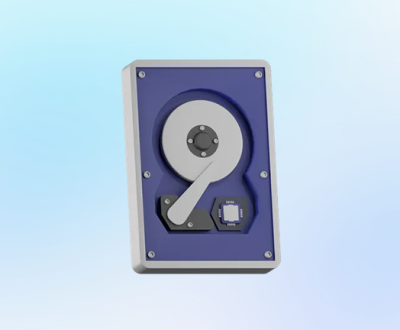The recycle bin on a computer is a temporary storage location for deleted files and folders. It provides a safety net, allowing users to easily restore items they may have accidentally deleted. However, there are situations where items are removed from the recycle bin, either intentionally or due to system settings.
Method 1: Restore from the Recycle Bin Itself (if possible)
Check the Recycle Bin: The first step is to simply open the Recycle Bin on your desktop. Look through the list of items in the Recycle Bin to see if the deleted file or folder is still there. If it is, right – click on the item and select “Restore”. This will return the file or folder to its original location.

Sort and Search in the Recycle Bin: If you have a lot of items in the Recycle Bin, you can sort them by date, name, or size to make it easier to find the specific item you want to recover. Additionally, you can use the search function in the Recycle Bin to look for keywords related to the deleted item.
Method 2: Use System Restore Points (Windows Only)
What are System Restore Points?: System Restore Points are snapshots of your computer’s system settings and files at a particular point in time. Windows automatically creates restore points regularly, and you can also create them manually. These restore points can be used to revert your system back to a previous state, which may include the recovery of deleted files.
Accessing System Restore: To use System Restore, go to the Control Panel and search for “System Restore”. Select “Create a restore point” and then click on “System Restore” in the System Properties window. Follow the on – screen instructions to choose a restore point that was created before the file was deleted. Keep in mind that this method may not specifically target the recovery of a single file but rather restore the entire system to a previous state. It’s a good option if you suspect that the file was deleted as a result of a system – wide issue or software installation that caused problems.
Method 3: Use File History (Windows Only)
Enabling File History: File History is a feature in Windows that continuously backs up your files to an external drive or a network location. If you have enabled File History, it can be a convenient way to recover deleted files. To check if File History is enabled, go to the Control Panel and search for “File History”. If it’s not enabled, you can set it up by connecting an external drive and following the prompts.
Recovering Files from File History: Once File History is enabled and has been backing up your files, you can recover deleted items by opening File History and navigating to the location of the file you want to restore. You can browse through different versions of the file and select the one you need. File History allows you to restore individual files or entire folders, and it’s a relatively straightforward method as long as you have been regularly backing up your files.
Method 4: Use Time Machine (Mac Only)
Overview of Time Machine: Time Machine is a backup feature on Mac computers that automatically backs up your entire system, including files, applications, and system settings, to an external hard drive. It creates a chronological record of your data, allowing you to easily restore files to a previous state.
Using Time Machine to Recover Deleted Files: To recover deleted files using Time Machine, connect the external drive where your Time Machine backups are stored. Then, open the folder or location where the file was originally located. Click on the Time Machine icon in the menu bar and select “Enter Time Machine”. You will see a visual representation of your file system, with different time points on the right – hand side. Navigate through the time points until you find the version of the file or folder you want to recover. Select the item and click “Restore” to bring it back to its original location.
Method 5: Use Third – Party Data Recovery Software
Panda Assistant data recovery software is a tool designed to help users retrieve lost or deleted data from various storage devices.
This software offers several useful features. It has the ability to recover a wide range of file types, including documents (such as Word, Excel, and PDF files), photos, videos, and audio files. Whether the data has been accidentally deleted from the recycle bin, lost due to a system crash, or erased as a result of a formatting error, Panda Assistant may be able to come to the rescue.
One of its key advantages is its user-friendly interface. Even those with limited technical knowledge can navigate through the software with relative ease. The recovery process typically involves a simple scan of the storage device, which can be a hard drive, SSD, USB flash drive, or memory card. Once the scan is complete, the software presents a list of recoverable files, allowing users to preview them before deciding which ones to restore.
Method 6: Recover from a Cloud Storage Backup
Cloud Storage Services: Many people use cloud storage services such as Google Drive, Dropbox, or OneDrive to store their files. These services often have their own backup and version – control features. If you have synced the file that was deleted to a cloud storage service, you may be able to recover it from there.
Recovering Files from Specific Cloud Services: For example, in Google Drive, you can check the “Trash” folder to see if the deleted file is there. If it is, you can restore it. Dropbox also has a “Deleted Files” section in the account settings, where you can find and restore deleted files. OneDrive allows you to recover deleted items from the “Recycle Bin” within the OneDrive interface. Additionally, some cloud storage services offer version – history features, which allow you to access previous versions of a file in case it has been modified or deleted.
Method 7: Seek Professional Data Recovery Services
When to Consider Professional Services: If the above methods do not work or if you are dealing with critical data that is extremely important, such as business – critical files, financial records, or irreplaceable personal photos and videos, it may be worth considering professional data recovery services. These services have specialized equipment and expertise to handle more complex data recovery situations, such as recovering data from a damaged hard drive or a failed storage device.
Choosing a Professional Data Recovery Company: When looking for a professional data recovery company, do your research. Look for companies with a good reputation, experienced technicians, and proper certifications. Get quotes from multiple companies and ask about their success rates and the types of data recovery services they offer. It’s also important to understand the cost – involved, as professional data recovery can be expensive, especially for more complex cases.
Precautions to Take to Avoid Data Loss in the Future
Regular Backups: The most important precaution is to regularly back up your data. This can be done using external hard drives, cloud storage services, or built – in backup features on your computer. Set up a backup schedule and stick to it to ensure that your data is always protected.
Be Cautious When Deleting Files: Before deleting a file, double – check that you really no longer need it. Avoid using the “Shift + Delete” shortcut to bypass the Recycle Bin unless you are certain that the file is no longer needed.
Keep Your System and Software Updated: Regularly update your operating system and software to ensure that you have the latest security patches and bug fixes. This can help prevent system – related issues that could lead to data loss.
Handle Storage Devices Properly: When using external hard drives, USB flash drives, or other storage devices, make sure to eject them properly before unplugging them. This helps prevent data corruption and loss due to improper removal.
About us and this blog
Panda Assistant is built on the latest data recovery algorithms, ensuring that no file is too damaged, too lost, or too corrupted to be recovered.
Request a free quote
We believe that data recovery shouldn’t be a daunting task. That’s why we’ve designed Panda Assistant to be as easy to use as it is powerful. With a few clicks, you can initiate a scan, preview recoverable files, and restore your data all within a matter of minutes.
Subscribe to our newsletter!
More from our blog
See all postsRecent Posts
- How to recover deleted word document 2025-07-09
- How to recover deleted photos on sd memory card 2025-07-09
- How to recover completely deleted files 2025-07-09

 Try lt Free
Try lt Free Recovery success rate of up to
Recovery success rate of up to









